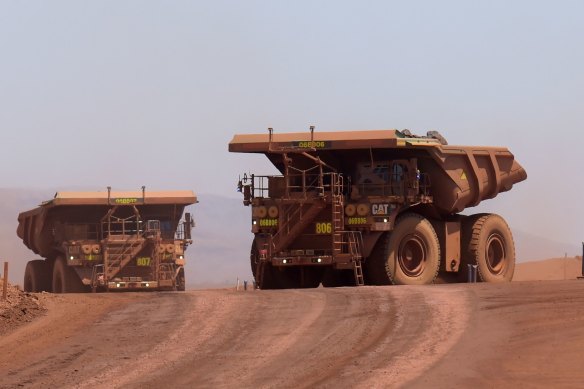
Rio Tinto’s first-half profit edged higher as the world’s biggest iron ore miner proved resilient to China’s economic slowdown and property crisis.
The company reported underlying earnings of $US5.8 billion ($8.9 billion) in the six months to June 30, up 1.8 per cent from the year before. That was just below the median analyst estimate of $US5.9 billion ($9 billion). Rio will pay an interim dividend of $US1.77 ($2.71) a share.

Rio has posted $US5.8bn net profit for the half-year, as iron ore prices start trending down.Credit: Bloomberg
The world’s largest miners remain historically profitable despite concerns over an economic slowdown in China, which has weighed on iron ore prices this year.
Rio will bring its massive Simandou project in Africa’s Guinea into production in 2025, a development that’s likely to push down prices further.
Loading
“We are at an inflection point in our growth, with a step change from our aluminum business and consistent production at our Pilbara iron ore operations,” Rio chief executive Jakob Stausholm said in a statement Wednesday.
“We have considerable growth in cash flow from the ramp-up of the underground copper mine at Oyu Tolgoi, and more value to come as our Simandou investment and Rincon lithium project proceed at pace.”
Rio said lower iron ore and aluminum prices resulted in a $US200 million ($305.8 million) decline in earnings overall compared to the same period last year. This was offset by strong copper prices.
A disappointing post-pandemic recovery in China, the biggest metals-consuming nation, has put downward pressure on demand for industrial commodities.
While prices of iron ore remained relatively resilient during the reporting period, they are expected to soften over the second half and beyond.
Bloomberg









 Add Category
Add Category